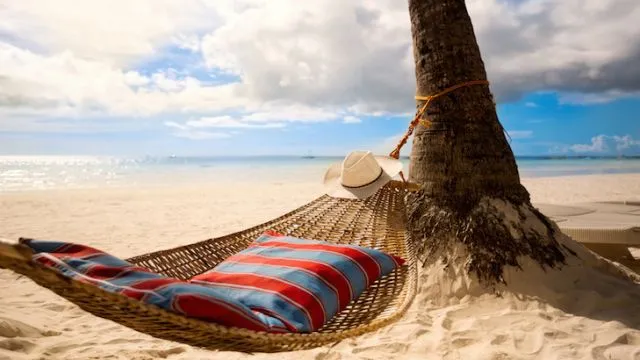
- Share on Facebook472
- Share on Pinterest
- Share on Twitter
What is better for sleep: hammocks or beds? We’re accustomed to beds, but the benefits of sleeping in a hammock should be taken seriously.
A University of Geneva Study found that the gentle rocking motion of a hammock helps people fall asleep faster and encourages a deeper state of sleep. Research conducted on 12 healthy adults noted that they fell asleep quicker in a rocking bed, and the rocking also boosted certain types of sleep-related brain wave oscillations. It increased slow oscillations and bursts of activity in the brain known as sleep spindles, which are associated with deep sleep and memory consolidation.
The researchers also found the swaying motion increased the duration of stage N2 sleep, a type of non-rapid eye movement sleep that usually takes up about half of a night’s worth of good sleep.
Though the study was small, it could mean that hammocks should be considered in treating insomnia and other sleep disorders. Further, a good night’s sleep has all sorts of benefits, such as greater ability to concentrate, a better mood, better body repair and recovery and increased learning.
It’s worthwhile to note hammocks may be good for back pain, they are dust-mite free, and breathe well in hot weather.
Hammocks are also a solution to disrupted sleep because of tossing and turning. When you sleep on a flat bed, your body weight collects in different areas, called pressure points, as explained by Hammock Life Tips. That leads to moving around all night as you try to relieve tension and discomfort to different areas and parts of your body. A hammock, however, adjusts to your body shape.
Likewise, a hammock facilitates sleeping in what is considered the healthiest position: flat on your back with the head slightly elevated. The position gives the brain optimal blood circulation, and allows for unobstructed breathing, according to one doctor at the American Academy of Sleep Medicine.
Other non-health-related benefits of hammocks include convenience and affordability. When camping, pitching a hammock is quick, and there won’t be any rocks sticking in your back as you sleep. And in hot weather, there’s great air circulation; while in cold weather, just stay in your sleeping bag, in the hammock.
And then there’s the view. One of my most memorable nights was spent in a hammock on the patio of a palafito (house on stilts in the middle of a lake) in Venezuela, watching the midnight Catatumbo lightning.
How to sleep in a hammock
Whether on your balcony, in your bedroom or camping, you should make sure your hammock is hung with a nice loose curve. The curve will prevent any shoulder squeeze, and will ensure you don’t fall out, according to The Ultimate Hang. Sleep in it diagonally for a flat position, and bring in a pillow, if you like (though a hammock does naturally elevate your head).
The diagonal line works equally for those who prefer to sleep on their side, or even in fetal position. However, with the way the netting holds you, conforming to your natural curves and removing pressure points, a hammock will often keep you happily sleeping on your back, even if that’s not your usual style.
Avoid hammocks that have horizontal rods at each end (spreader-bar hammock): They are unstable, and won’t bring the same positive benefits, though they may look nice.
There are double hammocks available for couples, though the truth is it can be hard to fall asleep, as the hammock pushes you together. They can be great for reading, cuddling or sex.
Hammock history
Hammocks appear to date back around a thousand years, to when the Maya and other indigenous groups in Central America and the Caribbean used them. Hung from trees, they offered distance from the dirty ground and from snakes and spiders. Sometimes people would place hot coals or kindle small fires under the hammocks in order to stay warm or ward off insects.
The earliest hammocks were woven from the bark of the Hamak tree. Then fibers from the Sisal plant were used as they could be softened quite easily. Cotton rope hammocks have only really been around for the last 60 years.
The word “hammock” may come from the Taino people of the Caribbean, who used the word hamaca to refer to fish nets, or it might come from the Hamak tree.
Seaside Hammocks estimates that at least 100 million people around the world use hammocks as their beds. But if you want to take a gentle sleep to an amazing extreme, you can copy the participants in the International Highline Meeting in Italy, and sleep in a hammock suspended thousands of feet in the air, with a great view of the Italian Alps.
Whatever your preference, it’s worth thinking about alternative ways to sleep instead of the typical bed. Sometimes there are better ways to do things — don’t be afraid to try them!
—Tamara Pearson
- Share on Facebook472
- Share on Pinterest
- Share on Twitter

